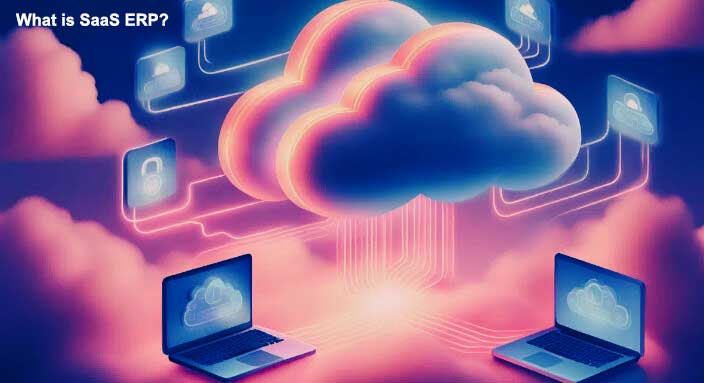In the dynamic landscape of Enterprise Resource Planning (ERP), Software as a Service (SaaS) ERP solutions have emerged as game-changers, offering businesses the advantages of cloud-based efficiency, scalability, and accessibility.

This article explores the world of SaaS ERP, highlighting its key features, benefits, and the transformative impact it can have on modern businesses.
Understanding SaaS ERP
What Is SaaS ERP?
SaaS ERP, or Software as a Service Enterprise Resource Planning, is a cloud-based solution that delivers ERP functionality through a subscription model. Unlike traditional on-premises ERP systems, SaaS ERP is hosted in the cloud, allowing businesses to access and utilize the software through web browsers.
The Evolution of ERP to SaaS
SaaS ERP represents the evolution of ERP systems towards cloud-based solutions. This shift eliminates the need for complex on-premises infrastructure, offering businesses greater flexibility, accessibility, and cost-effectiveness.
Key Features of SaaS ERP
Cloud Accessibility
The primary feature of SaaS ERP is its cloud accessibility. Users can access the ERP system from anywhere with an internet connection, promoting remote work and real-time collaboration.
Subscription-Based Model
SaaS ERP operates on a subscription-based model, where businesses pay a recurring fee. This eliminates the upfront costs associated with traditional ERP implementations, making it more budget-friendly.
Automatic Updates and Scalability
SaaS ERP providers handle system updates automatically, ensuring that businesses always have access to the latest features and security patches. Additionally, the scalability of SaaS ERP allows businesses to adjust resources based on their needs.
Multi-Tenancy
SaaS ERP often employs a multi-tenancy architecture, where multiple businesses share a common infrastructure. This promotes resource efficiency and cost savings.
The Benefits of SaaS ERP
Cost-Effective Implementation
SaaS ERP eliminates the need for significant upfront investments in hardware and IT infrastructure. Businesses can subscribe to the service, reducing initial implementation costs.
Flexibility and Scalability
SaaS ERP solutions are flexible and scalable, making them suitable for businesses of all sizes. Whether a startup or an established enterprise, the system can adapt to changing needs.
Accessibility and Collaboration
Cloud accessibility ensures that employees can access the ERP system from anywhere, promoting collaboration among teams, especially in a globalized and remote work environment.
Automatic Updates and Maintenance
SaaS ERP providers handle updates and maintenance tasks, relieving businesses of the burden of managing these processes. This ensures that the system remains secure and up-to-date.
Implementing SaaS ERP in Your Business
Vendor Selection
Choosing the right SaaS ERP vendor is crucial. Consider factors such as the vendor’s reputation, security measures, customer support, and how well their solution aligns with your business needs.
Data Migration and Integration
Planning for data migration from existing systems to SaaS ERP is essential. Ensure that the chosen solution integrates seamlessly with other tools your business uses.
User Training
While SaaS ERP systems are designed to be user-friendly, providing comprehensive training for your employees ensures that they can maximize the benefits of the system.
Conclusion
SaaS ERP has revolutionized the way businesses approach Enterprise Resource Planning. With its cloud-based accessibility, cost-effectiveness, and automatic updates, SaaS ERP empowers businesses to streamline operations, foster collaboration, and stay agile in an ever-changing business landscape. When considering ERP solutions, SaaS ERP stands out as a transformative choice for modern businesses seeking efficiency, flexibility, and scalability.